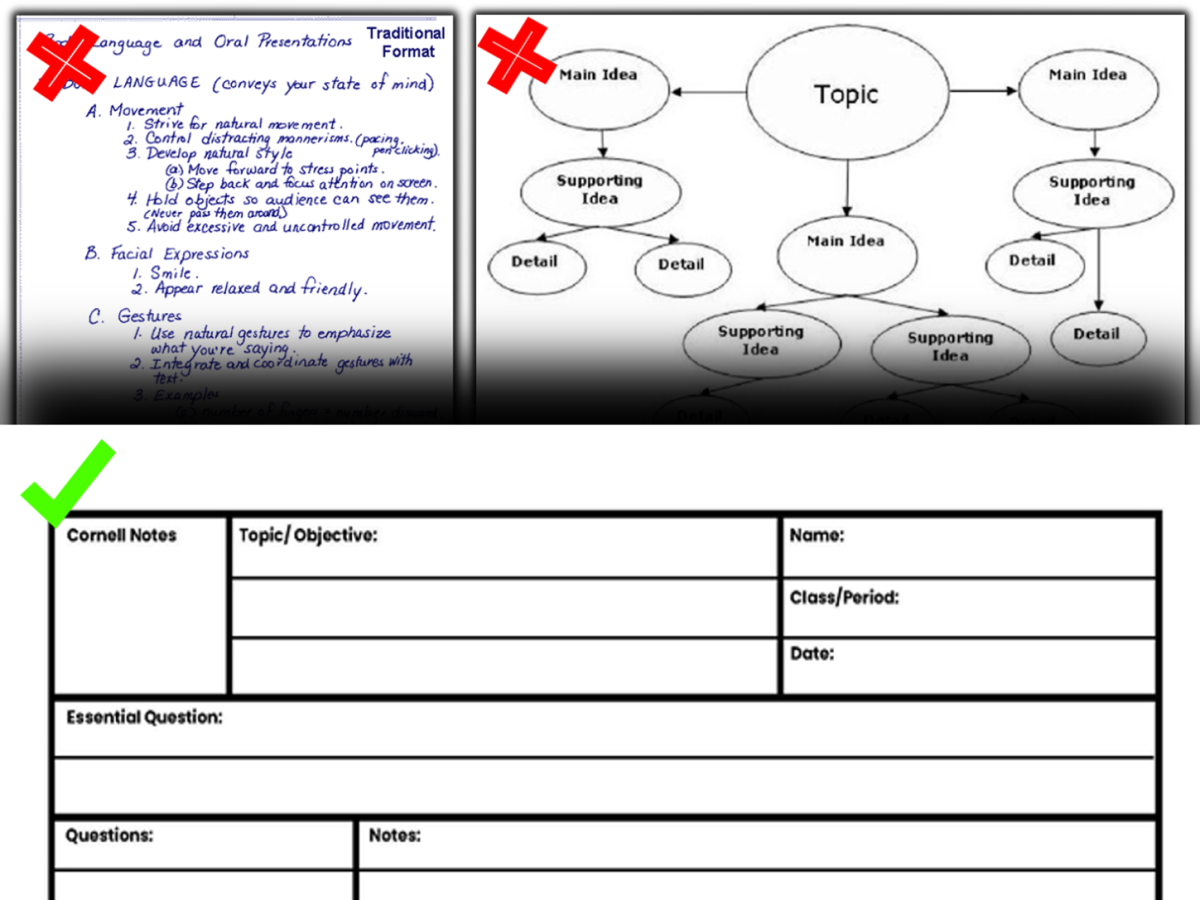The Cornell Notes note-taking system is one we’ve used for various years. For most, that even includes being forced to use it in elementary school.
Santa Clara High School has an article on their website, The Roar, with the name of “OPINION: Teachers should not force students to take notes using the Cornell Notes method.” A very crucial part in this article says,
“All students differ from one another as do their learning styles. Though there are people who benefit from taking Cornell Notes, there are students who prefer other methods, such as the box and bullet method, or the outline method. Students should not be limited to just one method, especially if it does not foster their learning style.”
This is especially true for most people. I personally prefer the Outlining method. Instead of Cornell’s note taking on the side and summary at the bottom of the page, the Outlining method provides the topic with bullet points for supporting information under the topic’s subcategories.
I’m definitely not in the minority when I say that the Cornell method is useless. A study in 2008 by educator Keil Jacobs of Wichita State University in Kansas titled “A Comparison of Two Note Taking Methods in a Secondary English Classroom” says,
“The guided notes method should be more effective when information requires knowledge, recall, or basic comprehension, while the Cornell method (once students are able to use it properly), seems to be more effective when the synthesis, application, or evaluation is required of students.”
Keil Jacobs also ran a study with two of his classes and said:
“Students using the guided notes method showed a larger increase than the Cornell group, from 51 percent correct to 84 percent correct. Students in the Cornell group showed a smaller increase, from 56 percent to 61 percent, but students in this group were better able to answer higher-level questions than those in the guided notes group.”
If you still believe that the Cornell note taking method is better than other methods, Keil Jacobs earlier said,
“My observations indicated that the Cornell method, on the other hand, may be more valuable to students when they need to synthesize and apply information, but the results on the post-intervention quiz (which primarily included recall questions) were below those of the guided notes group. The Cornell system should be useful in classes such as mine, in which I often ask students to synthesize information or make connection between a text and their own lives.”
Preventing students from using another form of note taking should not be allowed. Going back to the article by The Roar, they say:
“When instructors prevent students from using other styles of note-taking, it often forces students into a “box,” where they are unable to learn the material and absorb information to the best of their ability. This can negatively impact their grades.”
With this hardly effective note taking method, why should it put students at a disadvantage because they prefer other methods but are sometimes given a lower grade for not using Cornell notes.
It’s also been shown that while they might be useful for lower grades, it’s not too important for university students and above. In elementary and high school, you are usually given a fair amount of time to take notes so you’d have time for Cornell, but when in university it’s a fast paced environment that doesn’t really give you time for summaries and organization. You’re also grabbing information from numerous sources at a time, and Cornell doesn’t adjust room for that.
This method that barely helps academically should not be forced upon students anymore.
Sources:
https://soar.wichita.edu/server/api/core/bitstreams/97c6f855-16d8-4412-a680-7783690da0d4/content
